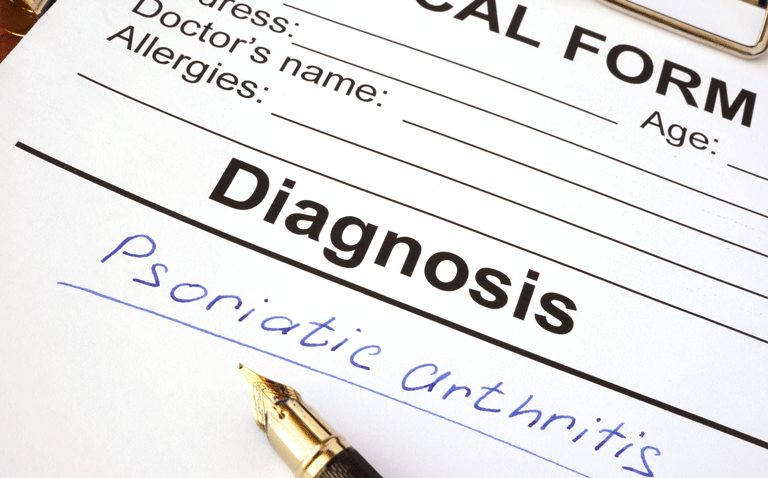Risankizumab (brand name Skyrizi) is now approved by the European Medicines Agency (EMA) for active active psoriatic arthritis in patients who failed to respond to one or more disease-modifying antirheumatic drugs (DMARDs).
Psoriatic arthritis can be described as an inflammatory arthritis affecting the joints and connective tissue and which is a progressive disease that ranges from mild synovitis to severe erosive arthropathy.
Psoriatic arthritis occurs in patients with the skin disease psoriasis and while psoriasis affects around 3% of the general population, up to 20% of those with psoriasis develop psoriatic arthritis. Sufferers of psoriatic arthritis will generally experience joint inflammation which causes swelling and pain and which has a negative impact on their quality of life.
The treatment of psoriatic arthritis is progressive, depending on severity and would normally begin with non-steroidal anti-inflammatories and as the disease progresses, escalates to oral corticosteroids, DMARDs and finally biologic agents. There are currently several biologics approved for the management of psoriatic arthritis including ixekizumab and guselkumab.
Risankizumab was previously approved by the EMA in 2019 for the treatment of plaque psoriasis but that has been extended to include psoriatic arthritis.
Clinical efficacy of risankizumab
The EMA approval of risankizumab was based the findings of two Phase III clinical trials, KEEPsAKE-1 and KEEPsAKE-2. Both trials were placebo-controlled trials in patients with moderate to severe PsA although KEEPsAKE-1 included patients with an inadequate respond to one or more DMARDs whereas KEEPsAKE-2 recruited those with an inadequate response to other biologicals. In both trials patients received risankizumab at subcutaneous dose of 150 mg and the primary outcome for both studies was the ‘percentage of Participants Achieving at least 20% Improvement in American College of Rheumatology (ACR20)’.
The ACR20 is a composite measure defined as both improvement of 20% in the number of tender and number of swollen joints, and a 20% improvement in three of the following five criteria: patient global assessment, physician global assessment, functional ability measure [most often Health Assessment Questionnaire (HAQ)], visual analog pain scale, and erythrocyte sedimentation rate or C-reactive protein (CRP).
In both trials, the ACR20 response was set as the primary endpoint and assessed after 24 weeks. Secondary endpoints included the Health assessment questionnaire disability index (HAD-DI), which represents a measure of physical function and the proportion of patients achieving minimal disease activity (MDA).
In KEEPsAKE-1 (KS1) and KEEPsAKE-2 (KS2), 57.3% and 51.3% of patients respectively, given risankizumab achieved the primary endpoint compared to 33.5% and 26.5% receiving placebo (p<0.001).
Similarly, improvements in HAQ-DI of -0.31 (KSI) and -0.22 (KS2) compared with -0.11 and -0.05, in the respective placebo groups was seen at week 24 (p<0.001). Finally, 25% (KS1) and 25.6% (KS2) of risankizumab patients achieved MDA, compared to 10.2% (KS1) and 11.4% (KS2) of those on placebo (p<0.001).
In terms of safety, serious adverse events occurred in 2.5% (KS1) and 4% (KS2) of patients given risankizumab although this was comparable to the placebo rate (3.7% and 5.5%, KSI and KS2).
According to the EMA approval, risankizumab can be used either alone or in combination with methotrexate.










